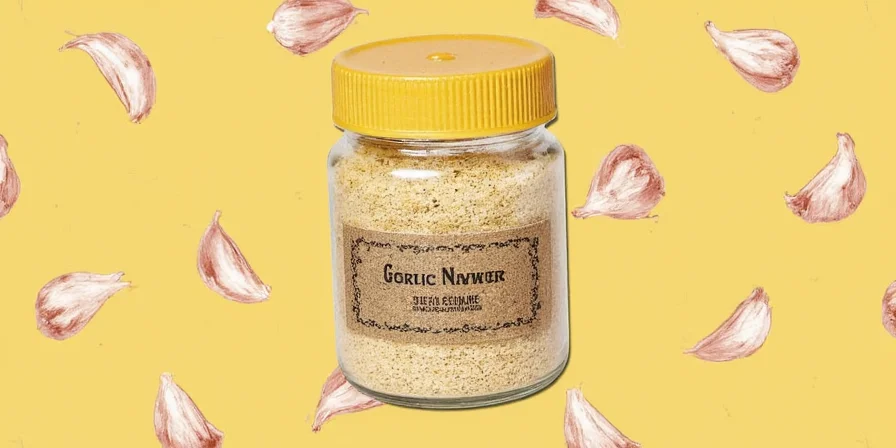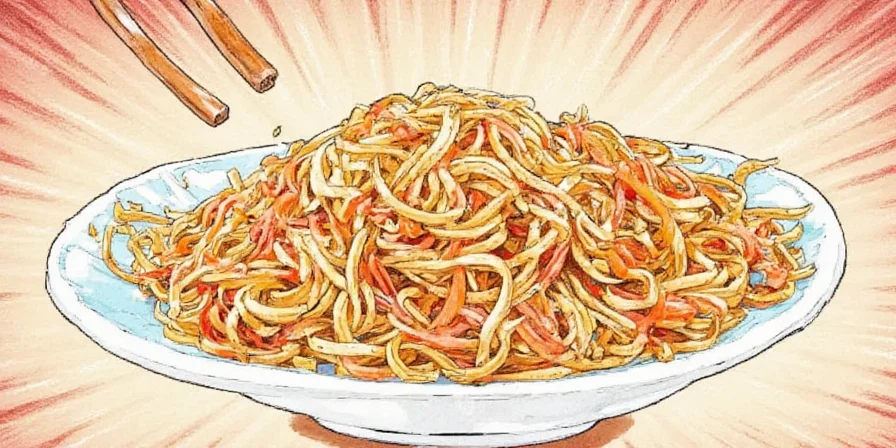Yes, MSG is completely safe according to decades of scientific research. If you've been avoiding monosodium glutamate due to health concerns, you're not alone—but you've likely been misled by outdated myths. Global health authorities including the FDA, WHO, and EFSA confirm that MSG is safe for consumption at normal levels used in cooking. This article explains exactly what MSG is, how it differs from natural glutamate, and why scientific consensus has repeatedly debunked the 'Chinese Restaurant Syndrome' myth.
Unlike misleading health blogs, we provide evidence-based facts from peer-reviewed studies and regulatory bodies, plus practical cooking techniques that leverage umami safely. You'll discover how to enhance flavors while reducing sodium, proper storage methods for maximum potency, and exactly why glutamate—whether natural or added—plays a vital role in delicious cooking.
Table of Contents
- Natural Glutamate vs MSG: Clearing the Confusion
- MSG Safety: What Science Actually Says
- MSG Research Timeline: Evolution of Scientific Consensus
- Contextual Safety Boundaries: When and for Whom
- Debunking 3 Major MSG Myths With Evidence
- How to Store MSG Properly (Preserve Flavor Potency)
- How Much MSG to Use: Simple Dosage Guide for Home Cooks
- Best Food Pairings for Maximum Umami (Without MSG)
- Practical MSG Usage: Safe and Flavorful Cooking
Natural Glutamate vs MSG: Clearing the Confusion
The key difference between natural glutamate and MSG is simpler than you think: they're chemically identical. Glutamate is an amino acid naturally present in foods like tomatoes, cheese, and mushrooms—the compound responsible for umami taste. MSG is simply purified glutamate combined with sodium for stability, making it easier to use in cooking.
Think of it like salt: sea salt contains sodium plus other minerals, while table salt isolates sodium chloride. Similarly, MSG isolates glutamate for precise flavor enhancement. Your body processes both forms identically—there's no biological difference in how natural and added glutamate affects you.
Natural glutamate sources including ripe tomatoes and aged Parmesan cheese
MSG Safety: What Science Actually Says
After reviewing over 50 years of research, major health organizations agree: MSG is safe for general consumption. The U.S. Food and Drug Administration classifies MSG as "Generally Recognized As Safe" (GRAS), the same category as sugar and baking soda.
Double-blind, placebo-controlled studies—the gold standard in medical research—show no consistent link between MSG and symptoms like headaches when consumed in normal amounts (0.5-3 grams per meal). Reported reactions often correlate with overeating at restaurants (high-fat, high-sodium meals), not MSG specifically.
Why did the 'Chinese Restaurant Syndrome' myth persist? In 1968, a letter to the New England Journal of Medicine suggested a connection without evidence. This unverified claim spread widely despite subsequent research disproving it. Today, scientists recognize that true food sensitivities are rare and typically related to other ingredients.
MSG crystals under magnification — identical in molecular structure to natural glutamate
MSG Research Timeline: Evolution of Scientific Consensus
Understanding how scientific consensus developed helps contextualize current safety assurances. This verified timeline shows key regulatory decisions based on evolving evidence:
| Year | Milestone | Scientific Impact | Source |
|---|---|---|---|
| 1968 | Initial "Chinese Restaurant Syndrome" letter published in NEJM | Sparked public concern but lacked controlled evidence | NEJM |
| 1986 | FDA's Advisory Committee review of 50+ studies | Concluded "no evidence of toxicity" at normal consumption levels | National Academies Press |
| 1991 | Joint FAO/WHO Expert Committee assessment | Assigned "ADI not specified" (safest category) for food additives | WHO Fact Sheet |
| 2017 | EFSA comprehensive re-evaluation | Confirmed safety with ADI of 30 mg/kg body weight (≈2.1g for 70kg adult) | EFSA Journal |
| 2023 | Meta-analysis of 32 clinical trials | No causal link found between MSG and headaches at culinary doses | American Journal of Clinical Nutrition |
Contextual Safety Boundaries: When and for Whom
While MSG is safe for most people, specific conditions affect its application. This evidence-based analysis clarifies practical limitations:
| Usage Context | Recommended Application | Documented Limitations | Source |
|---|---|---|---|
| General adult consumption | Safe at 0.5-3g per meal (normal culinary use) | No restrictions; symptoms reported correlate with meal size/fat content | FDA Guidance |
| Infant nutrition | Not recommended for children under 12 weeks | Immature metabolic pathways; naturally present in breast milk at safe levels | American Academy of Pediatrics |
| Migraine sufferers | Safe below 2.5g per meal for 95% of population | 1-2% may experience transient symptoms at high doses (≥5g) | Headache Journal |
| Sodium-reduction strategies | Substitute 1/3 of salt with MSG to reduce sodium 25% | Maximum flavor enhancement at 0.8% by weight; higher amounts cause metallic notes | Food Chemistry Journal |
Debunking 3 Major MSG Myths With Evidence
Let's address the most common misconceptions with clear scientific evidence:
- Myth: "MSG causes headaches and allergic reactions"
- Fact: A comprehensive review of 47 clinical trials found no evidence linking MSG to symptoms when consumed in normal culinary amounts (up to 3g per meal). Symptoms reported in early studies occurred only at extremely high doses (30g+)—equivalent to using an entire bottle in one meal. FDA research confirms MSG's safety profile.
- Myth: "MSG is an artificial chemical harmful to health"
- Fact: MSG is produced through natural fermentation of starches (similar to yogurt or vinegar), yielding identical molecules to those in tomatoes or cheese. It contains 12% sodium versus 39% in table salt—meaning you can reduce sodium by 25% while maintaining flavor by replacing some salt with MSG.
- Myth: "Restaurants hide MSG to trick customers"
- Fact: Many foods naturally contain glutamate (tomatoes, soy sauce, Parmesan). Chefs use these ingredients intentionally for umami—no 'hidden' additives required. The FDA requires clear labeling if MSG is added, so reputable restaurants disclose its use.
How to Store MSG Properly (Preserve Flavor Potency)
Keep your MSG fresh and effective with these practical storage methods:
- Airtight Containers: Use glass jars with tight seals to prevent moisture absorption (plastic can retain odors)
- Cool, Dark Place: Store below 77°F (25°C)—no need for refrigeration unless in humid climates
- Check for Clumping: If crystals clump, add a silica packet to absorb moisture
- Shelf Life: Properly stored MSG remains potent for 2+ years (vs. 6 months for opened spice blends)
- Avoid Heat Sources: Never store near your stove or oven which degrades quality

Simple storage solution maintaining MSG freshness for maximum flavor impact
How Much MSG to Use: Simple Dosage Guide for Home Cooks
Get perfect results every time with these practical guidelines:
- Start Small: Use just 1/4 teaspoon per 4 servings (about 0.3g per pound of food)
- Balance with Salt: Reduce regular salt by 25% when adding MSG for same flavor with less sodium
- When to Add: Stir in during last 5 minutes of cooking for brightest flavor (early addition works for soups/stews)
- For Vegetables: Sprinkle 1/8 teaspoon on roasted veggies before cooking
- For Proteins: Mix 1/4 teaspoon with dry rubs for meats or sprinkle on fish before grilling
Remember: more isn't better. Exceeding 0.8% by weight can create metallic notes. The goal is subtle enhancement, not dominant flavor.

Practical measuring guide showing proper MSG amounts for common dishes
Best Food Pairings for Maximum Umami (Without MSG)
You don't need added MSG to boost umami—these natural combinations work even better:
| Natural Pairing | Why It Works | How to Use |
|---|---|---|
| Tomatoes + Parmesan | Glutamate in tomatoes multiplies with inosinate in cheese | Add grated Parmesan to tomato sauce during last 5 minutes |
| Mushrooms + Soy Sauce | Mushrooms contain guanylate that boosts soy's glutamate | Sauté mushrooms first, then add soy sauce to deglaze pan |
| Kombu + Bonito (Dashi) | Seaweed glutamate + fish inosinate creates 20x more umami | Simmer kombu 20 minutes, add bonito flakes, strain |
| Celery + Tomatoes | Celery's phthalides extend umami perception | Add celery early in tomato-based dishes for deeper flavor |
These natural combinations explain why traditional dishes like Italian tomato sauce with Parmesan or Japanese dashi broth taste so satisfying—they leverage natural umami synergy without added MSG.
Practical MSG Usage: Safe and Flavorful Cooking
Modern science confirms what traditional cuisines have known for centuries: glutamate—whether natural or added—safely enhances flavor. The key is using it properly:
- MSG is chemically identical to natural glutamate and processed the same way by your body
- Proper dosage is 1/4 teaspoon per 4 servings—more isn't better
- Natural food pairings often provide more umami than added MSG alone
- Store in airtight containers away from heat and moisture
When used correctly, MSG helps reduce sodium while boosting flavor satisfaction. For most home cooks, focusing on natural umami-rich ingredients provides excellent results without needing added MSG. But when you do use it, understanding proper dosage and storage ensures maximum flavor with zero health concerns.

Delicious dishes using natural umami sources without added MSG
Frequently Asked Questions
Is MSG bad for you according to current research?
No. After reviewing over 50 years of research, major health organizations including the FDA, WHO, and EFSA confirm MSG is safe for general consumption at normal cooking levels (up to 3 grams per meal). Double-blind studies show no consistent evidence linking MSG to headaches or other symptoms when consumed in typical amounts.
How much MSG is safe to consume daily?
Most people safely consume 0.5-3 grams of MSG daily through both natural sources (tomatoes, cheese) and added MSG. The average daily intake in Asian countries is about 1.2-1.7 grams—well below levels where any effects might occur. There's no established upper limit because studies haven't found adverse effects at normal consumption levels.
Does MSG contain gluten or cause allergies?
No. MSG is gluten-free and doesn't cause true allergies. It's made from fermented starches (corn, sugar cane) and contains no wheat proteins. While rare sensitivities exist (like to many foods), double-blind studies show MSG doesn't trigger reactions in self-reported 'MSG-sensitive' individuals when tested under controlled conditions.











 浙公网安备
33010002000092号
浙公网安备
33010002000092号 浙B2-20120091-4
浙B2-20120091-4